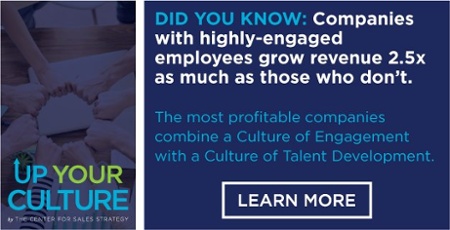 Many organizations have multiple generations represented in the workplace and with that, a plethora of stereotypes that come along with each generation.
Many organizations have multiple generations represented in the workplace and with that, a plethora of stereotypes that come along with each generation.
While it may not be intentional, individual bias can have a significant impact on employee engagement. Bias can sometimes provide a false direction on how to lead a team, so be sure you aren’t using generational stereotypes to influence your decisions.
Engaging Employees in a Cross-Generational Workplace
 The current largest generation at work, Millennials, are often characterized as job hoppers, lazy, and entitled. When you take bias out of the conversation, we know that Millennials seek career progression, can work well independently or in groups, and feel accomplished when contributing to something meaningful at work.
The current largest generation at work, Millennials, are often characterized as job hoppers, lazy, and entitled. When you take bias out of the conversation, we know that Millennials seek career progression, can work well independently or in groups, and feel accomplished when contributing to something meaningful at work.
Millennials aren’t the only generation with stereotypes. Bias also crosses over into Gen X and Baby Boomers. Gen X has been characterized in the workplace as control freaks, so they work best alone and aren’t team players or Boomers who have been stereotyped as set in their ways and uncompromising to change.
You can probably imagine the conflict and lack of productivity that might arise in an organization if cross-generations are asked to collaborate amongst all the bias that surrounds each generation. As Gen Z begins to come into the fold, more bias could, too. Or, maybe you’re not imagining this scenario because it’s your reality and you are living it every day!
Either way, increasing employee engagement ultimately helps you reduce regrettable turnover, increase productivity, and can help you retain and grow your best customers.
Here are a few things to consider that can help your team and your company feel more engaged in a cross-generational workplace:
1. Reduce Psychological Risk at Work
When employees are provided with opportunities to grow and develop, are recognized and rewarded, and are encouraged to voice their opinions and offer ideas, they're likely to be more engaged and more productive.
However, if an employee feels mistakes or weakness will be held against them, or they feel unheard and disrespected, they are likely to hold back and be disengaged.
2. Invite Employee Feedback on a Regular Basis
You will learn the most about your people by encouraging feedback often. The more honest feedback your people give, the more you learn about how you can motivate them. One idea to achieve this is to hold a town hall meeting once a quarter where you help answer questions on the minds of your employees.
Being transparent helps build trust, so the more honest and open you are, the more honest and open feedback you’ll get. This feedback is a great way for you to learn more about what’s on the minds of your people as well as a great way to show you value everyone’s feedback.
3. Celebrate Individual Wins, Often
Every person has their strengths and contributes to the success of your company in different ways. Celebrating individual wins often helps everyone in the company recognize all the different ways in which coworkers are helping the company as a whole.
For example, if someone in accounts receivable was successful in getting all collections over 90 days paid up, send a company email congratulating and thanking that person for a job well done. If a salesperson upsold a Key Account for the company a second year in a row, take the time to congratulate them at the next all-staff meeting.
No matter what an employee’s age is or the generation they represent—transparency, strong leadership, and a consistent effort to keep employees engaged makes anyone, at any age, feel valued for their contributions.
Be mindful of how you approach bias, but also make sure your team leaders are mindful, too. Change starts at the top, and if all leaders are on the same page, the rest of your company will feel it, too.









Leave a Comment